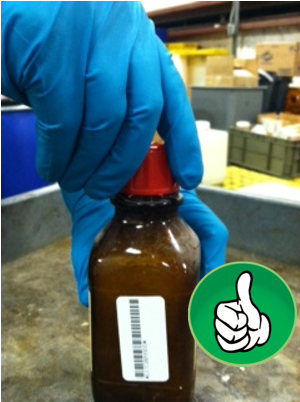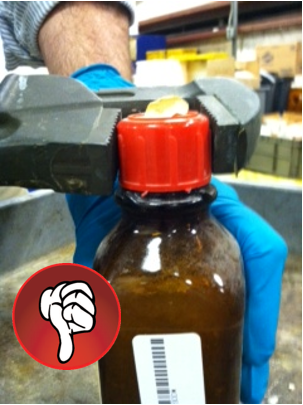When a partially used chemical container is put away we want to protect what is left and want to keep vapors from escaping. Many attempt to accomplish this by tightening the cap as tight as possible. This doesn’t really work. Overtightening can damage the top to the point of failure – leading to escape of the material we’ve had a number of recent incidents where this has led to spills and exposure.
Overtightening can also actually decrease the efficiency of the seal. For most bottles the effective closure is between the lip of the bottle and a cap liner made of foil or teflon – called a “wad” in container speak, the closure is not in the threads of the screw top. Cranking it down distorts this liner and creates routes for vapor escape.
To close a container effectively: clean the closure top (bottle and cap) and then tighten it only to a snug fit. If the bottle still leaks: try para-film around the whole top (outside the cap), tape around the top, or placing the whole container in a zip-lock plastic bag. None of these are 100% effective, but consensus is that the para-film approach works best.

